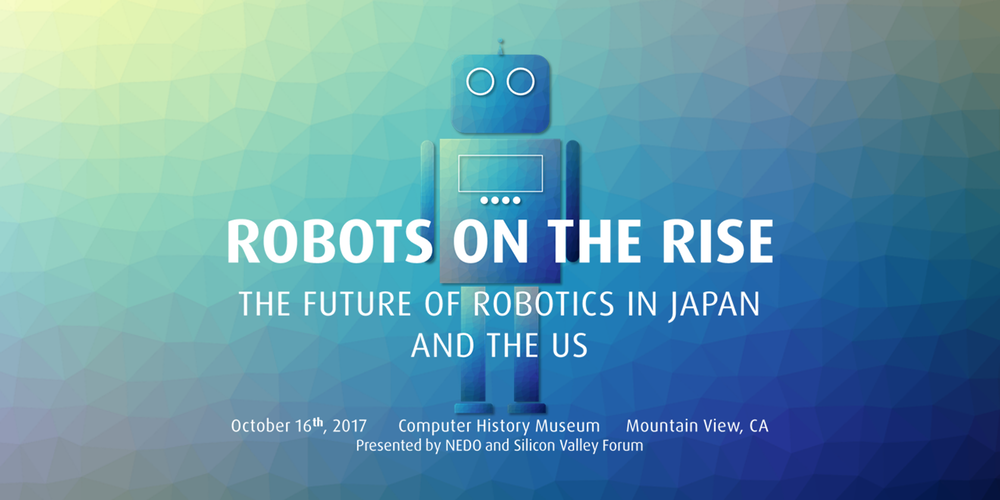
Robohub.org
Robots on the Rise

NEDO, Japan’s New Energy and Industrial Technology Development Organization, is a regular funder of robotic technology, has an office in Silicon Valley, and participates in various regional events to promote its work and future programs. One such event was Robots on the Rise: The Future of Robotics in Japan and the US held October 16th in Mountain View, CA and jointly sponsored by Silicon Valley Forum.
Over 400 people attended the all-day series of panels with well-known speakers and relevant subject matter. Panels covered mobility, agricultural robotics, search and rescue, and the retail and manufacturing revolutions. Henrick Christensen from UC San Diego gave an overview of robotics in Japan and the US as a keynote. He described the key drivers propelling the robotics industry forward and the digitization of manufacturing: mass customization, unmanned vehicles, the aging society (particularly in Japan), and the continuing need for application-specific integrators.
He was followed by Atsushi Yasuda from METI, Japan’s Ministry of Economy, Trade and Industry (the agency that funds NEDO) who emphasized Japan’s need to focus on technologies that can safely assist their aging population. Manufacturing, agriculture, nursing and medical care, plus disaster relief were points he detailed.
I was the moderator of a panel on The Manufacturing Revolution: Automated Factories with speakers from Yaskawa (Chetan Kapoor), Yamaha (Hiro Sauou), OMRON/Adept (Edwardo De Robbio), GE (Steve Taub) and VEO Robotics (Patrick Sobalvarro). Trends in this arena are being driven by the global movement toward mass customization and the need for flexibility in automation and robotics. For the next while that flexibility will use humans in the loop to collaborate with their robot counterparts.
There was also an exhibition with around 25 companies and agencies participating in a pop-up type of trade show. It was noisy, fun and informative.
Best line from the investment panel: “Invest in missionaries; not mercenaries.”
Second best line came from Henrik Christensen regarding measuring the successfulness of home robots by their “time to boredom.”
Most interesting question and answer about the future came from James Kuffner, the CTO of Toyota Research Institute who said that Toyota asked the Institute what the company should to do after self-driving reduces the size of the car industry. Kuffner said that Toyota decided to “pivot to robotics and particularly to assistance robots for health, elder and home care.”
In the panel on unmanned vehicles, the consensus was that mapping, proprietary driving data, regulation and weather were all holdups thwarting fully autonomous vehicles (Level 5 vehicles (without pedals or a steering wheel)). Because of those problems, it was their opinion that only Level 4 would be achieved in the next decade.
NEDO’s 2017 fundings total $1.17 billion and include $99.1 million for robot technology seed and mid-term fundings for practical robotic solutions. Current projects include infrastructure inspection and maintenance, disaster response robots, elder care robots, and next-generation technologies in industrial and service robots and AI.
tags: cx-Industrial-Automation


